Management of Dust in Show Caves
Abstract
Recent research has elucidated the mechanisms associated with the sources, transport and deposit of dust in show caves [1].
Dust is carried into caves by visitors. Much of the dust that they carry had recently attached itself to their clothing. In the cave, flexing of their garments releases the dust to float in the air. The dust is carried high into the air by the thermal plume caused by body heat. The coarser components of the dust then fall rapidly to the floor, while the finer components mix with the air deep into the cave and settle out over a time period that extends to a matter of days. Dust and mud from deposits on paths are re-entrained into the air or splashed as mud by the walking of visitors.
New measurement methods and changed practice when developing or refurbishing paths, both inside and outside the cave, can be used to reduce the dust problem.
Introduction
Dust is a serious problem to the long term conservation of show caves. The dust accumulates as a corrosive mat of clay minerals, textile fibres, and organic particles that decay and corrode the underlying surface. Often the mass is cemented by calcite deposition which makes it difficult to remove.

Figure 1. Dust on a cave surface
Recent research [1] has made clear some aspects of dust in show caves. From a variety of evidence, the process of dust transport into caves on the clothing of visitors can now be described and is the major source of dust in most caves.
There may be a natural component of dust in some caves, but it appears that the quantity of natural dust in many show caves is too small to detect without stopping the tours for a protracted time. In most show caves the major component of dust is from the visitors, the dust is carried by their clothing and is released into the cave atmosphere where it is carried through the cave. Some of the dust falls on the floors and adds to the mud on the walking surfaces. Mud and dust is then re-entrained into the air or splashed from the paths onto decorative surfaces.
The dust can be divided into three components:
- The largest component is the mineral dust. This becomes mud when mixed with water. It is largely composed of clay minerals and industrial aerosols (including the products from vehicular transport), the most important of these may be smoke, with its carbon particles,
- Textile fibre fragments from the slow disintegration of the clothing worn by the cave visitors,
- Organic material, hair and dander (skin flakes) from the visitors, and pollen and other natural organic material from the air outside the cave.
It is now possible to piece together a picture of the transport of dust into caves. There is a zone around the human body called the personal dust cloud. In this zone dust is absorbed and released to maintain a cloud of dust. It appears that dust is stored on the massive surface area of the textile material of the person's clothing. Simple calculations show that for textile fibres of 0.02mm diameter, one kilogram of clothing would have a surface area of about 200 square metres. The surface area of a person is in the order of 1.8 square metres, and of a room about 100 square metres. See Figure 2.
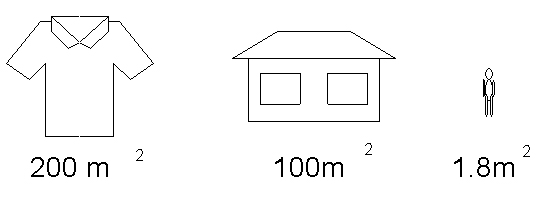
Figure 2. Relative surface areas of clothing dwelling and a person.
The personal dust cloud at any time is both absorbing and releasing dust, mainly from the clothing. But the location of the zone of absorption and the zone of release is not coincident because of the plume of warm air that generally rises from the human body because of body heat. See figure 4.
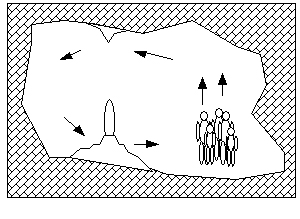
Figure 3. The thermal plume above people in a cave
The body is more likely to acquire dust from the ground, and more likely to release dust above body level. Large dust particles will fall rapidly back to the ground, but the majority of the dust will be spread over a large area.
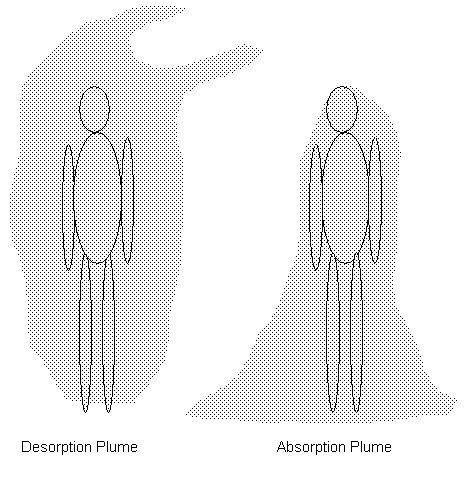
Figure 4. The two processes of absorption and desorption of dust occupy different areas about the body
The clothing that people wear appears to be central to the dust transport problem. A cycle of events is associated with personal clothing. Initially the clothing would be considered clean, Figure 5, would release very little dust, and so would only absorb dust.
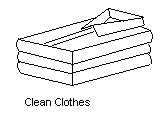
Figure 5. Clean clothes, but are they really clean?
Then when the clothes are worn in an environment with high ambient dust levels, dust is absorbed by the clothes.
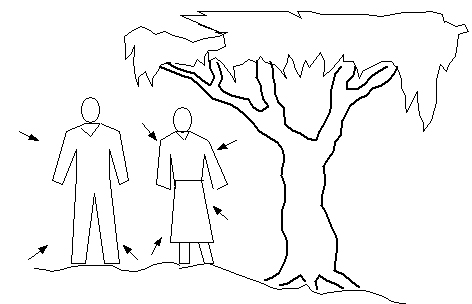
Figure 6. Dust is absorbed by clothes when exposed to a dusty environment.

Figure 7. In a cave dust is released from clothing and little dust is absorbed.
When people walk through a cave the motion associated with walking mobilises the dust in their clothing (Figure 7). Because of the unique flexible nature of textiles, every fibre can rub against the next fibre and so dislodge any dust adhering to the fibres. As there is little dust to absorb, there is a net release of dust, heavy components falling immediately to the floor, but most of the dust staying suspended for long times in the air before settling throughout the cave.

Figure 8. the clothing cycle passes through the cleaning phase
The clothing cycle continues to the phase of washing, Figure 8, where the clothes are soaked in water and surface active agents called surfactants (soap) are used to help release the dust adhering to the surface of the textile fibres. The surfactants are rinsed down the drain with the dust, and the clothes are dried to be reused. Figure 9.
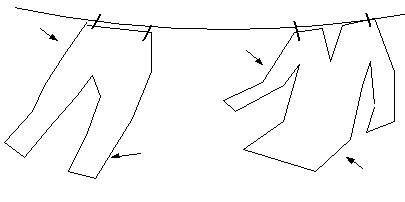
Figure 9. The clothes are dried by exposure to large volumes of air where initial dust absorption may take place.
The drying process, on a clothes line, or in a tumble dryer, may expose the clothes to large volumes of air that may contain dust, so that "clean clothes" may not be as clean as we think.
When a suitable instrument ( the APS laser particle instrument) was available to measure dust in cave air a number of experiments were tried [1]. If one slapped ones thighs while wearing jeans, the dust concentration increased by a factor of about ten or one hundred. However, no trials were conducted with clothing of different cleanliness. This would be a quite involved trial, although it could be well worth doing.
Figure 10 shows measurements of dust in the air in Diamond Cave, Jenolan, made with the APS instrument [1]. The quantity of dust in the air was probably zero before the tour arrived, but by the time the instrument was set up there was a level of dust in the air from the two people who set up the instrument. As dust is composed of particle of differing sizes, there are several ways of measuring dust concentration, so Figure 10 shows three curves showing the number of particles in a volume, the surface area of the particles in a volume and the mass of the particles in a volume. The curves show how the smaller particles stay in the air longer than larger particles. The fall in concentration with time is because of dilution as the dust spreads as well as because of particles settling on walls, roof and floor.
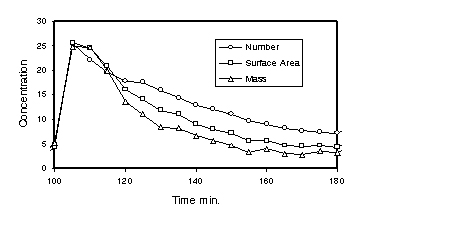
Figure 10. Decay of particle concentrations with time after a cave tour in Diamond Cave, Jenolan. The tour party arrived at 100min. and left within ten minutes.
The other source of dust in caves is from the air that flows through the cave. In many areas this is a tiny component of the dust compared with the dust carried by visitors, and indeed is a natural process contributing the yet undiscovered aeolian sediments that may have valuable information for scientists. The air outside a cave is a part of a cave's climate system, and any unnatural dust in this air may be carried into the cave and cause damage and degradation of the cave environment. Dust from paved areas, eroding earth on paths and automotive sources are all threats to caves through the dust carried into the cave. Some of this dust may be carried on the clothing of visitors, some may flow into the cave with natural air flow. So the management of dust should involve careful attention to the nature of the environment of the cave entrances. One study [3] found significant dust sources that were several kilometres distant from the entrances of the caves.
Dust Management
Management of the problem falls into two main strategies, management practices in and around the caves and measurement of the problem to be able to judge the effectiveness of the changes in management practices so that the best methods for each cave can be developed.
The major mode of dust transport is on clothing. It is not practical to issue visitors with cleaned clothing with special dust attributes, and it may not be very effective because most visitors are careful to wear clean clothing when they appear in public places. However muddy clothing is a particular hazard, and care should be taken to discourage the wearing of soiled clothes in caves. If clothing dries with mud on it, the dust that is shed when the wearer moves is visible in appropriate lighting, probably thousands or tens of thousands of times worse than the dust shed by clean clothing. The amount of dust shed by a visitor with clean clothes is quite invisible.
If it is not practical to reduce the dust released by the visitors' clothing then there remain other strategies to reduce the dust. By keeping the environment outside the cave free from dust there will be far less dust picked up just before the visitors enter, this dust is likely to be the most easily shed. It will also reduce the amount of dust flowing into the cave with the air.
Cleanliness of the track in the cave is important. On dry tracks, dust is generated by the friction of walking, on wet tracks, minute mud drops are splashed as people walk. One management initiative that can be applied [2] is to construct a wall 200 - 300mm high either side of the track to reduce the contamination of the cave either side of the track with the particles raised by walking.
Another management strategy is to rationalise the tour. If it is practical to have a round trip instead of retracing the entry route, then it may be possible to halve the walking length of the tour, and halve the dust released. People who are standing seem to release less dust than when they are walking.
The track surface is a major management consideration. Grating is very effective at reducing the amount of dust on a floor, but presents a problem catching the dust that falls through. Earth floors are very poor, they are continual sources of mud and particles. Perhaps a synthetic mat that will absorb the dust particles, but is amenable to cleaning would be best, but this is really the subject for a future investigation.
When any major management strategy is implemented it is useful to measure the dust fall before and after the change. There is a method of measurement of dust fall that is simple and sensitive, using glass Petri dishes to collect a sample of the dust over a few weeks, and a simple method with an special optical densitometer to evaluate the thickness of the dust film [1].
Conclusion
The dust associated with cave visitors is a major management problem to cave managers. Clothing is a significant part of the mechanism of dust transport, and avoidance of soiled clothes would be an effective management strategy. Management of the dust outside a cave should improve the dust problem in caves.
The components of the dust each cause problems for cave management, the organic component is corrosive, the inorganic is pervasive and permanent and the textile fibre component is difficult to remove.
Literature Cited
[1] Michie, N.A. (1997) "An Investigation of the Climate, Carbon dioxide and Dust in Jenolan Caves, N.S.W." PhD Thesis Macquarie University. Pp 298
[2] Jablonsky, P., Kraemer, S. and Yett, W. (1994) 'Final Report, Research Topic: Develop Preventative Measures for Future Accumulations of Cave Lint'. National Park Service Unit. Wind Cave National Park. Denver Museum of Natural History, Denver. Pp 74
[3] Salmon, L. Christoforou, C. S. and Cass, G. R. (1994) 'Airborne Pollutants in the Buddhist Cave Temples at the Yungang Grottoes, China'. Environmental Science and Technology Vol. 28 no. 5 pp. 805-811